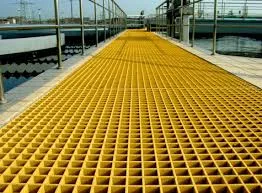
-
 Afrikaans
Afrikaans -
 Albanian
Albanian -
 Amharic
Amharic -
 Arabic
Arabic -
 Armenian
Armenian -
 Azerbaijani
Azerbaijani -
 Basque
Basque -
 Belarusian
Belarusian -
 Bengali
Bengali -
 Bosnian
Bosnian -
 Bulgarian
Bulgarian -
 Catalan
Catalan -
 Cebuano
Cebuano -
 China
China -
 China (Taiwan)
China (Taiwan) -
 Corsican
Corsican -
 Croatian
Croatian -
 Czech
Czech -
 Danish
Danish -
 Dutch
Dutch -
 English
English -
 Esperanto
Esperanto -
 Estonian
Estonian -
 Finnish
Finnish -
 French
French -
 Frisian
Frisian -
 Galician
Galician -
 Georgian
Georgian -
 German
German -
 Greek
Greek -
 Gujarati
Gujarati -
 Haitian Creole
Haitian Creole -
 hausa
hausa -
 hawaiian
hawaiian -
 Hebrew
Hebrew -
 Hindi
Hindi -
 Miao
Miao -
 Hungarian
Hungarian -
 Icelandic
Icelandic -
 igbo
igbo -
 Indonesian
Indonesian -
 irish
irish -
 Italian
Italian -
 Japanese
Japanese -
 Javanese
Javanese -
 Kannada
Kannada -
 kazakh
kazakh -
 Khmer
Khmer -
 Rwandese
Rwandese -
 Korean
Korean -
 Kurdish
Kurdish -
 Kyrgyz
Kyrgyz -
 Lao
Lao -
 Latin
Latin -
 Latvian
Latvian -
 Lithuanian
Lithuanian -
 Luxembourgish
Luxembourgish -
 Macedonian
Macedonian -
 Malgashi
Malgashi -
 Malay
Malay -
 Malayalam
Malayalam -
 Maltese
Maltese -
 Maori
Maori -
 Marathi
Marathi -
 Mongolian
Mongolian -
 Myanmar
Myanmar -
 Nepali
Nepali -
 Norwegian
Norwegian -
 Norwegian
Norwegian -
 Occitan
Occitan -
 Pashto
Pashto -
 Persian
Persian -
 Polish
Polish -
 Portuguese
Portuguese -
 Punjabi
Punjabi -
 Romanian
Romanian -
 Russian
Russian -
 Samoan
Samoan -
 Scottish Gaelic
Scottish Gaelic -
 Serbian
Serbian -
 Sesotho
Sesotho -
 Shona
Shona -
 Sindhi
Sindhi -
 Sinhala
Sinhala -
 Slovak
Slovak -
 Slovenian
Slovenian -
 Somali
Somali -
 Spanish
Spanish -
 Sundanese
Sundanese -
 Swahili
Swahili -
 Swedish
Swedish -
 Tagalog
Tagalog -
 Tajik
Tajik -
 Tamil
Tamil -
 Tatar
Tatar -
 Telugu
Telugu -
 Thai
Thai -
 Turkish
Turkish -
 Turkmen
Turkmen -
 Ukrainian
Ukrainian -
 Urdu
Urdu -
 Uighur
Uighur -
 Uzbek
Uzbek -
 Vietnamese
Vietnamese -
 Welsh
Welsh -
 Bantu
Bantu -
 Yiddish
Yiddish -
 Yoruba
Yoruba -
 Zulu
Zulu
fiberglass grid
The Benefits of Fiberglass Grids in Modern Construction
In the rapidly evolving world of construction and infrastructure, the demand for durable, reliable, and cost-effective materials has never been greater. Among these innovative solutions is fiberglass grid, a material that has gained significant traction in recent years. This article explores the characteristics, advantages, and applications of fiberglass grids, demonstrating why they are becoming a preferred choice for engineers and builders.
Fiberglass grids are composite materials made from fiberglass reinforced plastic (FRP), which consists of a polymer resin matrix with embedded glass fibers. This unique composition gives fiberglass grids an impressive strength-to-weight ratio, making them exceptionally strong yet lightweight. Compared to traditional materials like steel or concrete, fiberglass grids offer a significant reduction in weight, which can lead to easier handling and installation.
One of the most notable advantages of fiberglass grids is their corrosion resistance. Unlike metal, which can rust and degrade when exposed to moisture and chemicals, fiberglass is inherently resistant to corrosion. This property makes fiberglass grids particularly suitable for environments that are prone to harsh conditions, such as chemical processing plants, marine applications, and wastewater treatment facilities. The longevity of fiberglass grids can significantly reduce maintenance costs, translating into financial savings over the lifespan of a project.
Moreover, fiberglass grids are non-conductive, making them an excellent choice for applications requiring electrical insulation. This is particularly valuable in industries such as electrical utility and telecommunications, where safety is paramount. The non-conductive nature of fiberglass also means that it does not interfere with electromagnetic signals, making it a preferred option for flooring and structural applications in sensitive environments.
fiberglass grid

Another significant benefit of fiberglass grids is their versatility. Available in various shapes, sizes, and load ratings, they can be tailored to meet the specific requirements of a project. This adaptability allows engineers and architects to incorporate fiberglass grids into a wide array of applications, including pedestrian walkways, industrial flooring, and even architectural facades. Their customizable nature not only enhances design flexibility but also helps to optimize performance, ensuring that the final product meets all expected standards.
Fiberglass grids also contribute to sustainability in construction. As the demand for eco-friendly practices grows, many builders are looking for materials that have a reduced environmental impact. Fiberglass grids can be manufactured using recycled materials and can be designed to have a longer service life, thereby decreasing the need for frequent replacements. Their lightweight nature can also lead to lower transportation emissions when moving materials to construction sites.
In addition to these benefits, the installation of fiberglass grids can also improve site safety. Their lightweight design allows for easier handling, thereby reducing labor injuries during installation. Moreover, the slip-resistant surface of fiberglass grids enhances safety for pedestrians and workers, particularly in areas prone to spills or wet conditions.
In conclusion, fiberglass grids represent a modern solution to some of the most pressing challenges in construction and infrastructure. Their strength, corrosion resistance, versatility, and sustainability make them an ideal choice for a wide range of applications. As builders continue to seek innovative materials that align with the demands of contemporary engineering and environmental considerations, fiberglass grids are well positioned to play a pivotal role in the future of construction. By incorporating fiberglass grids into their projects, builders can not only enhance the performance and durability of their structures but also contribute to a more sustainable and efficient built environment.
Latest news
-
Exploring the Benefits of Top Hammer Drifter Rods for Enhanced Drilling PerformanceNewsJun.10,2025
-
High-Precision Fiberglass Winding Machine for GRP/FRP Pipe Production – Reliable & Efficient SolutionsNewsJun.10,2025
-
FRP Pipes & Fittings for Shipbuilding - Corrosion-Resistant & LightweightNewsJun.09,2025
-
Premium FRP Flooring Solutions Durable & Slip-ResistantNewsJun.09,2025
-
Premium Fiberglass Rectangular Tanks Durable & Lightweight SolutionNewsJun.09,2025
-
Tapered Drill String Design Guide Durable Performance & UsesNewsJun.09,2025









